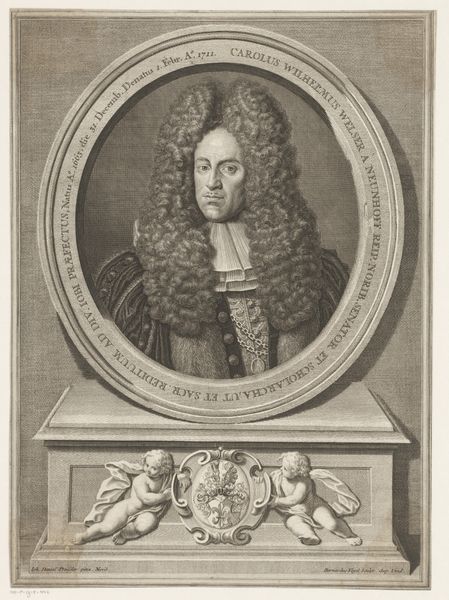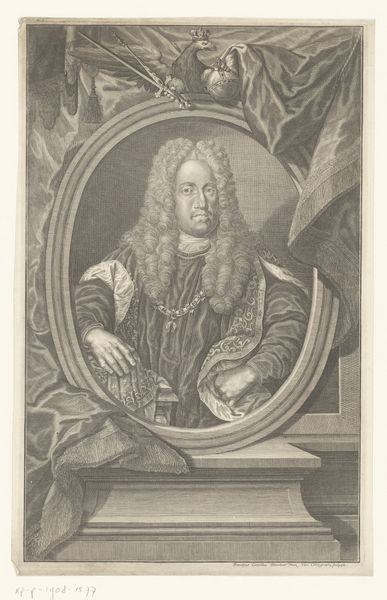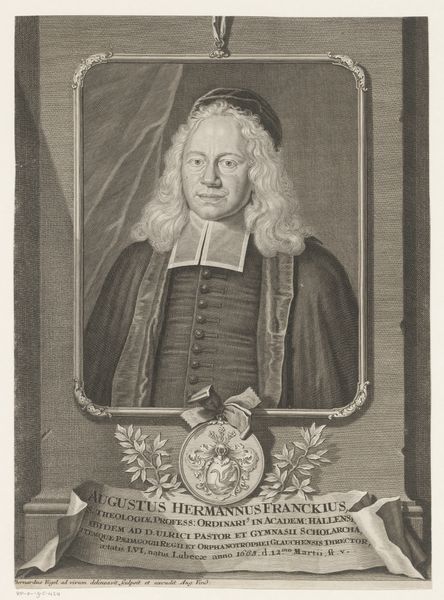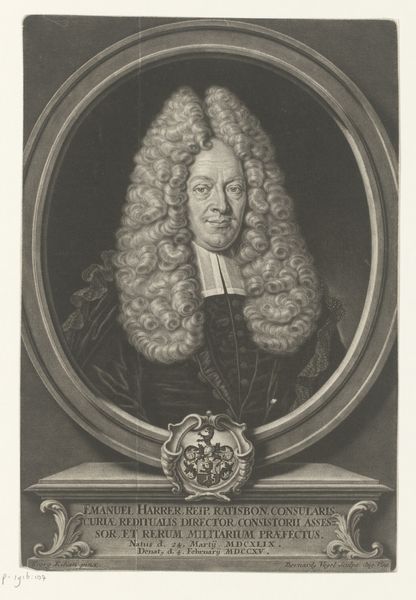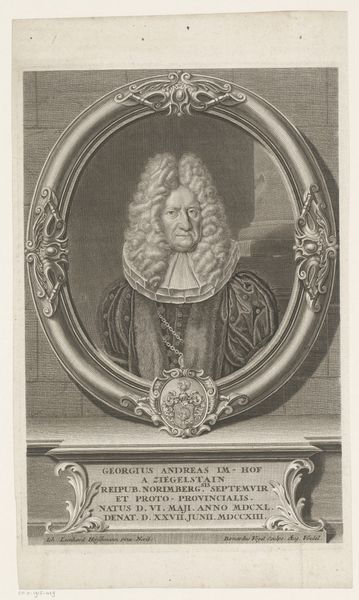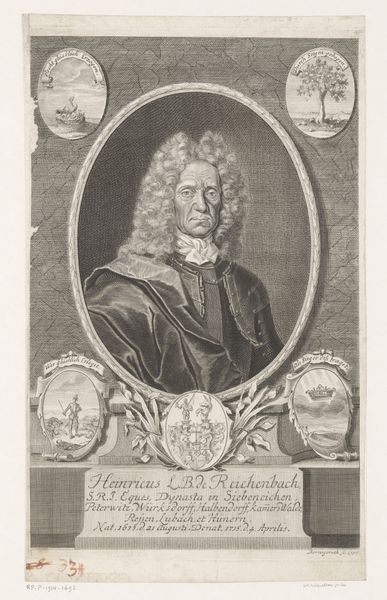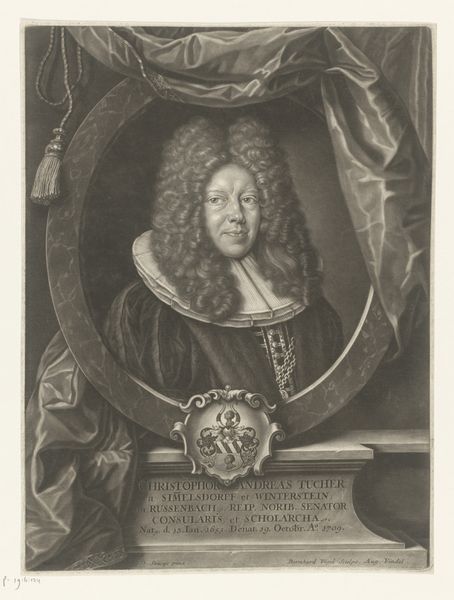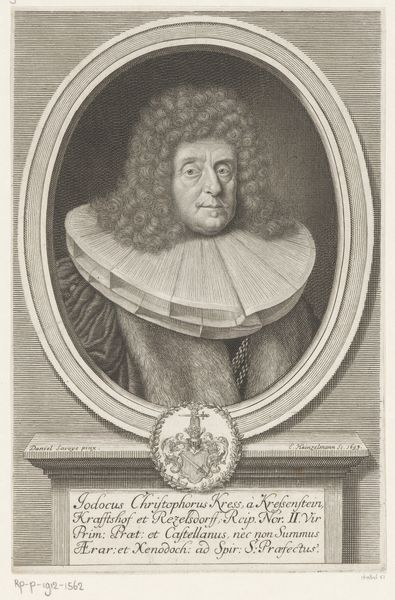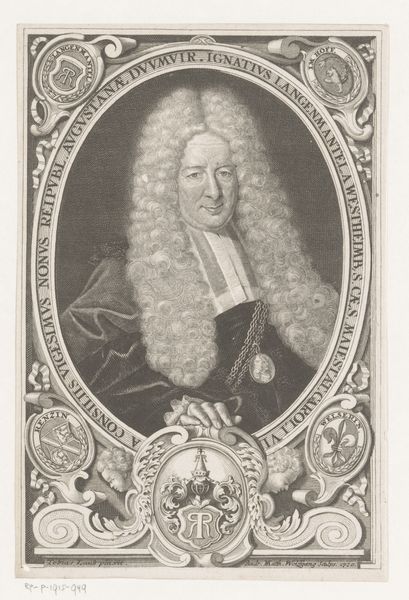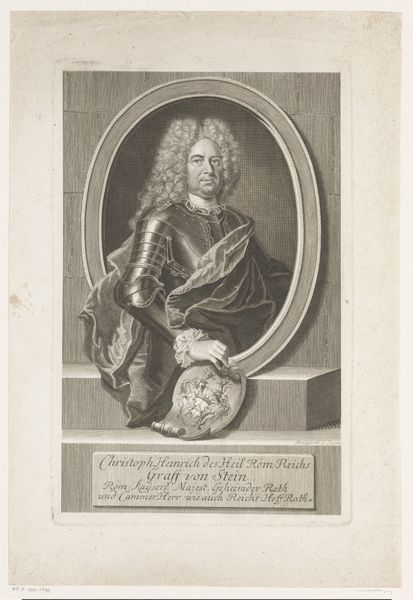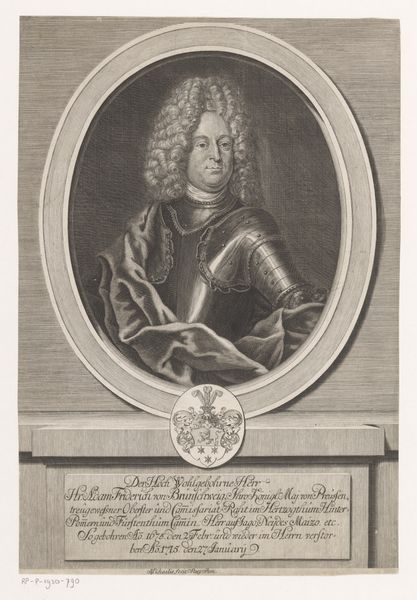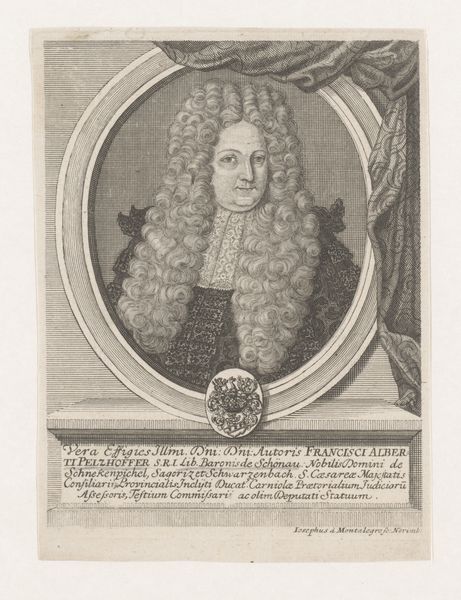
drawing, engraving
#
portrait
#
drawing
#
baroque
#
old engraving style
#
framed image
#
engraving
Dimensions: height 320 mm, width 220 mm
Copyright: Rijks Museum: Open Domain
Curator: What strikes me immediately is the overwhelming sense of...power, or perhaps, imposing formality? The wig is its own statement, isn't it? Editor: It certainly is. We're looking at a portrait of Georg Christoph Kress von Kressenstein, an engraving rendered before 1737 by Bernhard Vogel. Look at the layers of clothing, the wig, even the stern expression, it’s designed to project status, dominance. It begs the question, who was this man, and what did he represent? Curator: Well, according to the inscription at the bottom, he was "Dvvmvir," or one of the two supreme magistrates of Nuremberg. So, not someone to be trifled with. Editor: Precisely. This isn't just a picture; it's a carefully constructed performance of authority. The Baroque style itself, with its ornamentation, plays a significant role here. The circular frame, the crest below, they contribute to a symbolic visual hierarchy that places Kress at the top. We have to consider this artwork within the historical and social context of early 18th-century Nuremberg. What did it mean to hold such a position? Who benefited from this system? Curator: I find the details in the face compelling—the way the light catches the skin, hinting at vulnerability beneath all the pomp. I wonder what he thought of this portrayal. Did he see himself as this formidable figure? Or was he playing a part, too? Perhaps the weight of those magistrate robes pressed down on him as heavily as it appears to. Editor: That’s an interesting point. I do think it's difficult to extract genuine emotions from these period portraits given that this particular social performance relies on rigid codes that effectively suppress displays of emotions, vulnerability, or any trait that doesn't communicate status. Curator: And those little details—the shadows in the corner, the careful etching of each strand of hair…I feel a sort of empathy for both artist and subject. Two artists of sort, both performing what society asks them. It feels...delicate. Editor: Yes, even within the constraints of the genre and period, artists can subtly humanize their subjects. Thanks to their meticulous work, artworks such as this one become precious historical testaments about the nuances of identity.
Comments
No comments
Be the first to comment and join the conversation on the ultimate creative platform.
